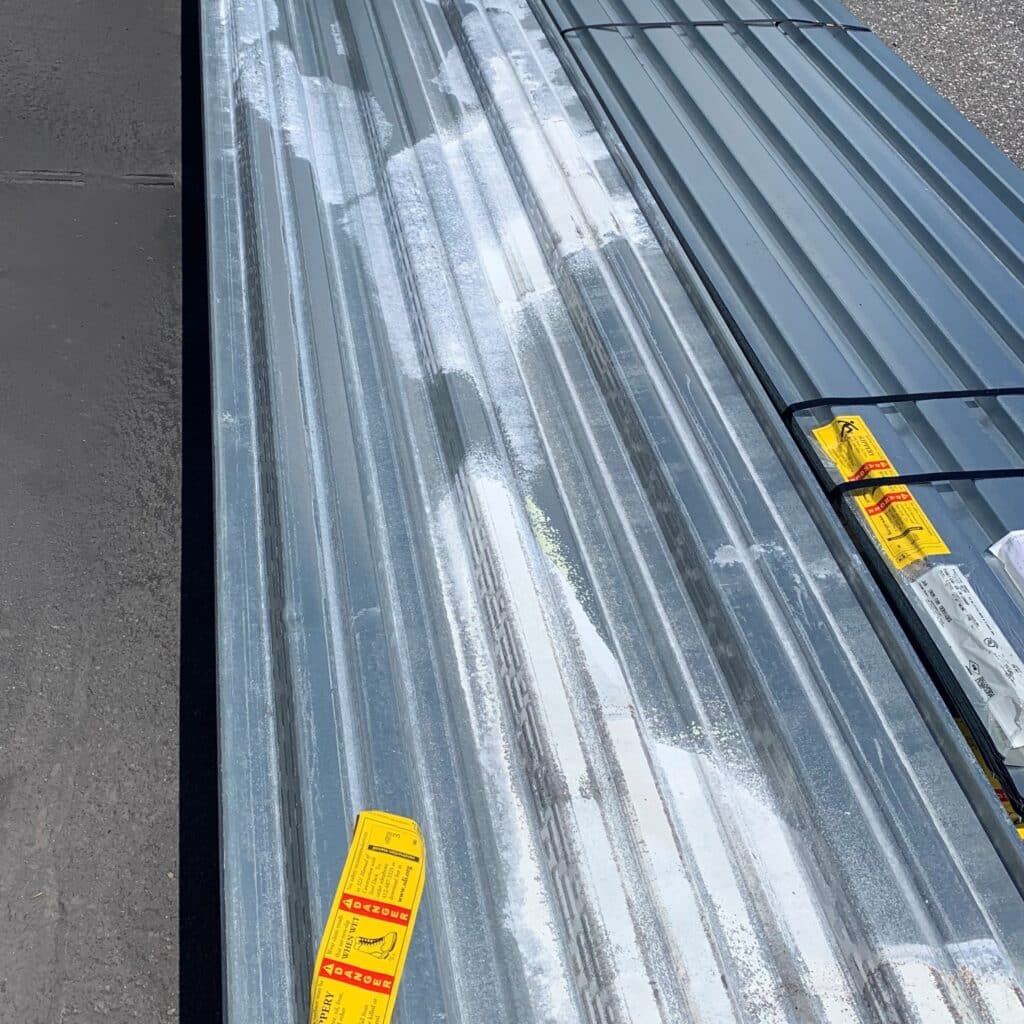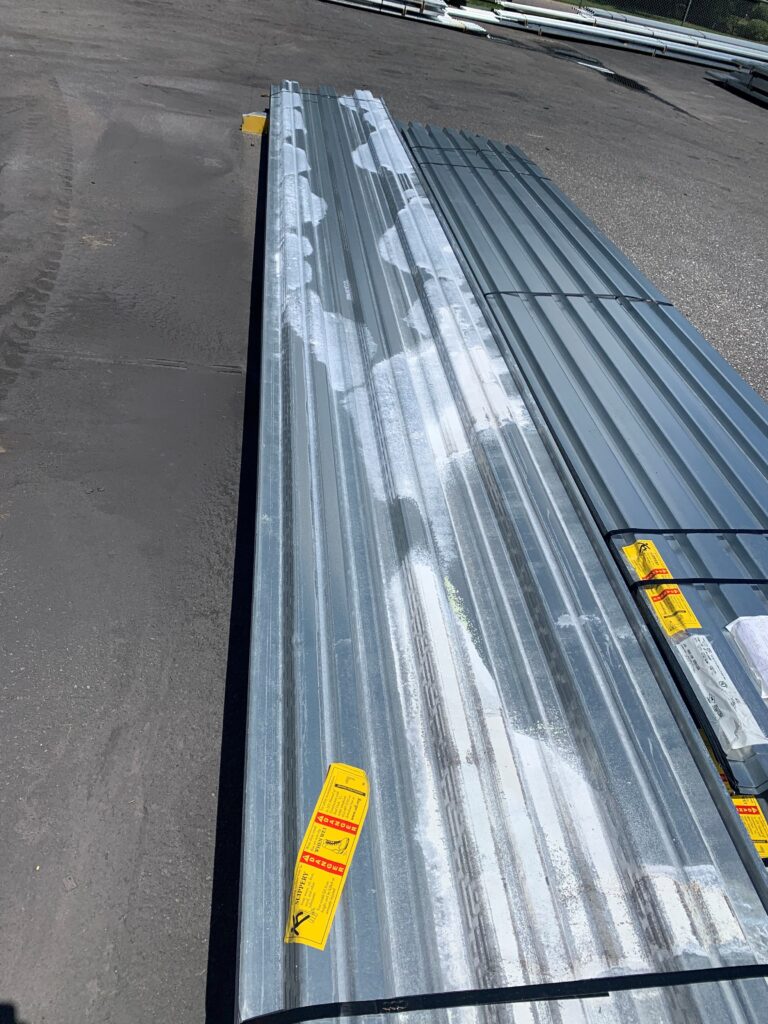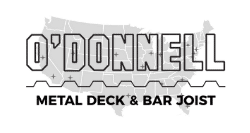
When it comes to construction, metal decking is a common choice for structures that demand strength and durability. Among the choices of materials available, steel is often preferred for its superior quality.
However, despite its commendable characteristics, steel deck corrosion, a phenomenon also known as oxidized metal decking, can pose significant challenges. In this article, we will discuss the causes of oxidized metal decking and provide techniques to prevent it.
Understanding the Corrosion Phenomenon
What Causes Oxidation in Metal Decking?
The corrosion of steel decks is a consequence of a chemical reaction between steel, oxygen and water. The most common types of corrosion include uniform corrosion, pitting, crevice corrosion, galvanic corrosion and concentration cell corrosion.
The following factors contribute to this process:
- Exposure to a humid or marine environment
- Presence of corrosive substances
- High ambient temperatures
- Fluctuating environmental conditions
The Impact of Corrosion
The implications of oxidized metal decking are far-reaching, and they extend beyond mere aesthetic concerns. Here’s what you can expect:
- Reduced structural integrity leading to safety hazards
- Increased maintenance costs
- Lower property value due to unsightly appearance
- Limited lifespan of the structure
Levels of Oxidation or White Rust Corrosion
White rust, or oxidized zinc, is a common issue that affects galvanized steel decking. It forms as a white, powdery deposit when the zinc coating comes into contact with water and air. This type of corrosion is categorized into three distinct stages, each progressively more severe than the previous one.
Stage 1: Surface Staining
The initial stage of white rust corrosion manifests as a slight discoloration or staining on the steel’s surface. This stage doesn’t cause much damage to the metal’s strength or structure, so it’s relatively safe. At this point, the zinc is starting to react with moisture and oxygen to form zinc hydroxide, which results in a chalky white appearance.
Stage 2: Formation of Zinc Hydroxide
In the second stage, the initial discoloration evolves into a more visible and bulky white deposit. This is a layer of zinc hydroxide. Though it may still not directly affect the structural integrity of the metal, it does impact the aesthetic appeal and can be a warning sign of potential progression toward more severe corrosion if not appropriately addressed.
Stage 3: Corrosion of the Base Metal
The third stage marks the point where corrosion becomes a serious concern. If you don’t treat white rust in its early stages, it may keep spreading and eventually break down the protective zinc layer, which leaves the base metal exposed. Once the steel is exposed, it is vulnerable to red rust, or iron oxide, which can quickly degrade the steel’s structural integrity.
In each stage of oxidation, preventative measures and maintenance are crucial in prolonging the life and performance of your metal decking. From regular inspections to timely repairs and the use of protective coatings, understanding these stages can help in devising an effective strategy to counter white rust corrosion.
Steel Deck Corrosion: Prevention and Mitigation
Here are some steps you can take to prevent and treat steel deck corrosion:
1. Choice of Material
The process of galvanizing metal, particularly steel, involves the application of a protective zinc coating. The zinc layer serves as a physical barrier that prevents corrosive substances from reaching the underlying steel. Beyond acting as a shield, the zinc coating also offers cathodic protection.
In the presence of corrosive elements, the zinc prefers to corrode first due to its higher reactivity compared to steel. This sacrificial behavior of zinc ensures that even if the coating is scratched or damaged, the exposed steel underneath will still be protected from corrosion. Consequently, galvanizing significantly inhibits steel corrosion and enhances the longevity and durability of the steel structure.
2. Regular Maintenance
Consistent maintenance checks and tidy-up routines can assist in identifying early indicators of corrosion, thereby halting its advance. It is crucial to eliminate substances such as debris, stagnant water and other possible corrosion triggers. The corrosion product, zinc hydroxide, dissolves quickly in mild acidic solutions. Standard household white vinegar is both highly effective and environmentally friendly for this purpose.
3. Additional Protective Coatings
Applying a protective coating can act as a barrier between the metal and corrosive elements. Options include paints, epoxy coatings and powder coatings, among others.
4. Cathodic Protection
This technique uses a sacrificial anode, a more reactive metal that corrodes in place of the steel. It’s particularly useful for structures that are exposed to harsh environments.
You Can Depend on O’Donnell Metal Deck for Professional Products and Service

O’Donnell Metal Deck is your trusted partner for all steel decking products. With years of experience and a commitment to quality, we offer a range of solutions tailored to serve the metal decking industry. Our team of experts is on hand to provide guidance, quality products and comprehensive after-sales service.
Contact us today for more information!






